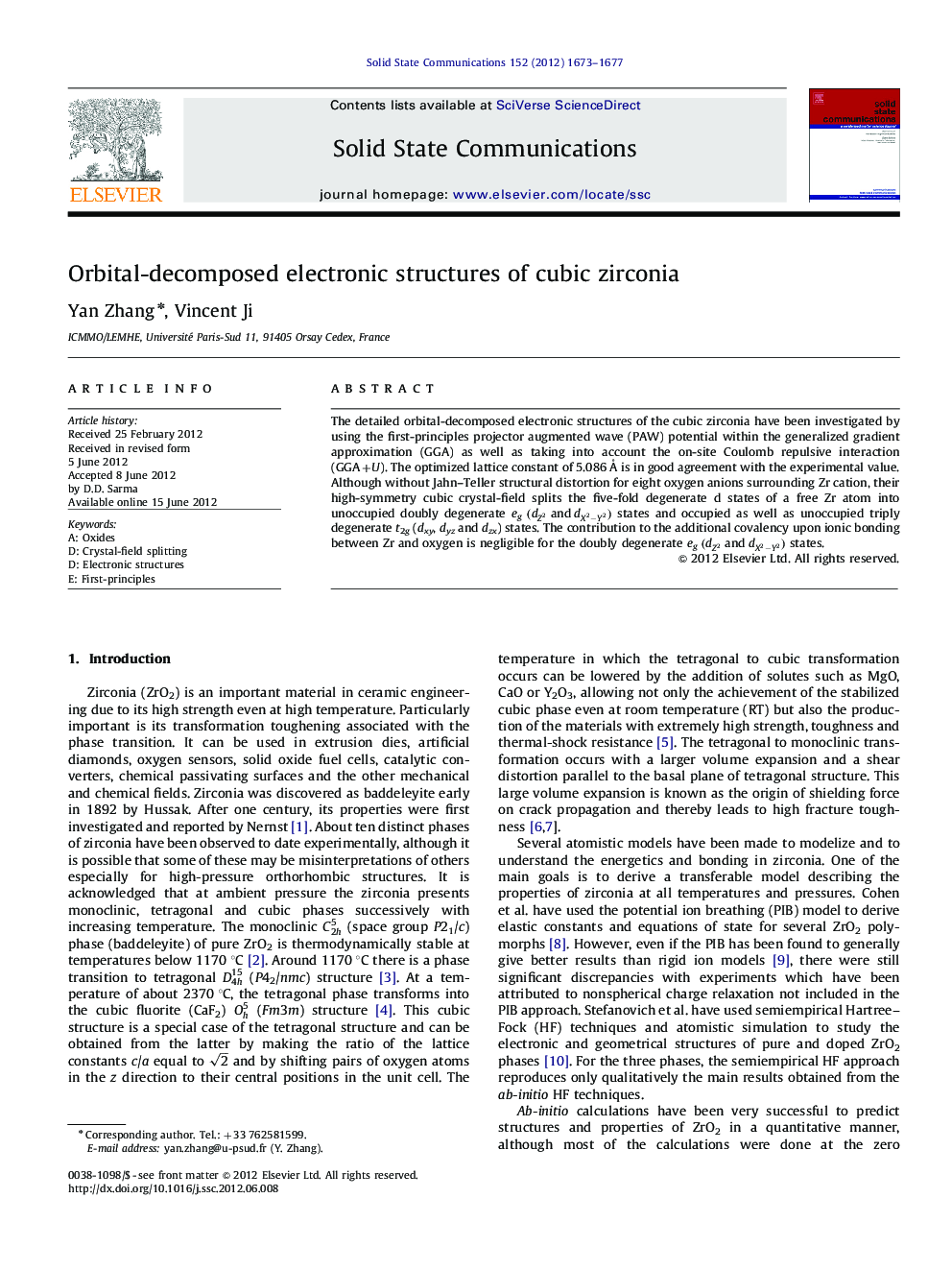| Article ID | Journal | Published Year | Pages | File Type |
|---|---|---|---|---|
| 1592875 | Solid State Communications | 2012 | 5 Pages |
The detailed orbital-decomposed electronic structures of the cubic zirconia have been investigated by using the first-principles projector augmented wave (PAW) potential within the generalized gradient approximation (GGA) as well as taking into account the on-site Coulomb repulsive interaction (GGA+U). The optimized lattice constant of 5.086 Å is in good agreement with the experimental value. Although without Jahn–Teller structural distortion for eight oxygen anions surrounding Zr cation, their high-symmetry cubic crystal-field splits the five-fold degenerate d states of a free Zr atom into unoccupied doubly degenerate eg(dZ2anddX2−Y2) states and occupied as well as unoccupied triply degenerate t2g (dxy, dyz and dzx) states. The contribution to the additional covalency upon ionic bonding between Zr and oxygen is negligible for the doubly degenerate eg(dZ2anddX2−Y2) states.
► No Jahn–Teller distortions are observed for eight oxygen anions around Zr cation ► Cubic crystal-field splits Zr(4d) into doubly eg and triply t2g degenerate states ► Doubly degenerate eg states do not contribute to the covalency between Zr and oxygen
